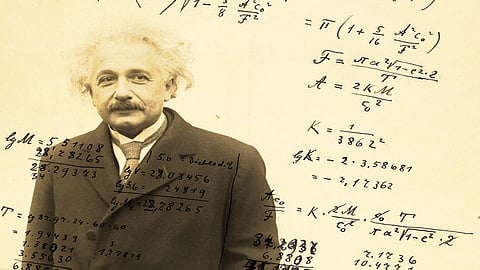

New Delhi | A rare autographed manuscript by renowned physicist Albert Einstein explaining the development of his famous contributions to science -- theories of special relativity (1905) and general relativity (1915) -- is set to go under the hammer at Christie's '20th/21st Century Art Evening Sale' on September 23.
The auction, expected to fetch around USD 980,000 – 1,400,000 (Rs 8.13-11.61 crore), will be held at the Waldorf Astoria Shanghai.
The manuscript, first published in a special supplement to the New York Times on 3 February 1929, is written in German. Einstein had been commissioned to explain the development of his two most famous contributions to science: the theories of special relativity (1905) and general relativity (1915).
"We are delighted to bring this important manuscript by the renowned scientist Albert Einstein to our Shanghai saleroom for the very first time. Given Einstein's historical links with Shanghai, alongside the significant interest from Chinese collectors in scientific artifacts, our Shanghai saleroom is a fitting context in which to present this unique manuscript.
"We look forward to exciting global collectors and science enthusiasts with this remarkable piece of history, inextricably connected with Einstein's groundbreaking contributions," said Georgina Hilton, head of Classic Art, Christie's Asia Pacific in a statement.
The 14-page manuscript holds tremendous significance as it recounts the history behind the discovery of relativity, explains its working, and looks to the possibility of completing the cycle of relativity in a 'unified field theory'.
It includes two equations and a diagram illustrating the structure of the spacetime continuum, along with two pages of scientific formulae.
